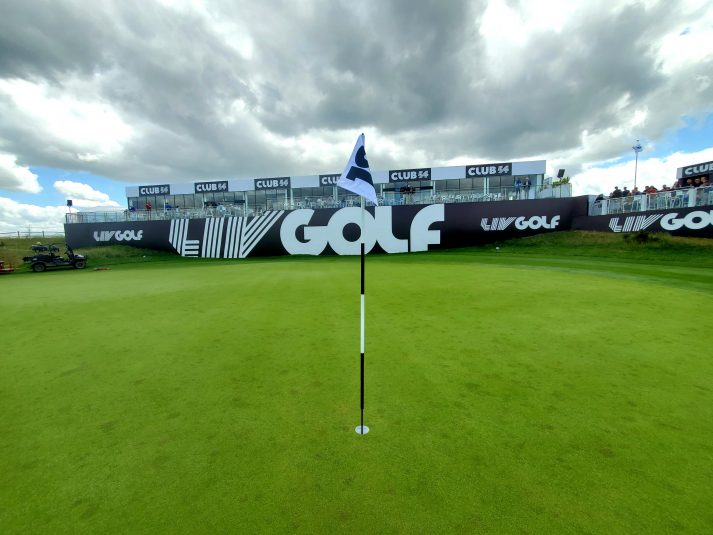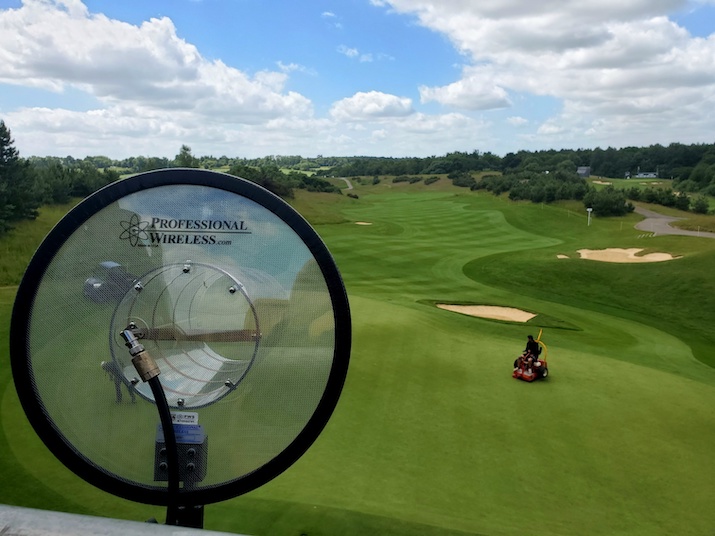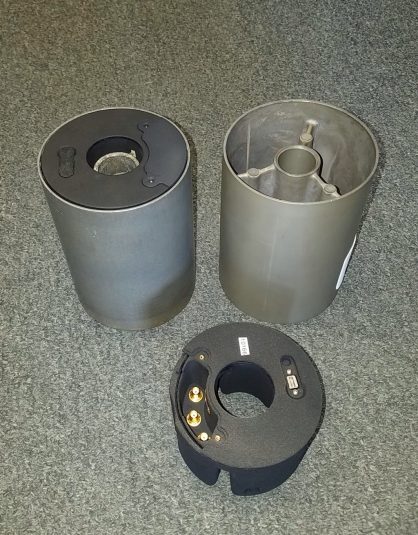LIV Golf Aims To Take Golf Audio on a Really Long Drive
Upstart association puts sound near the core of its broadcast identity
Story Highlights
LIV Golf’s website landing page makes a declaration regarding the new league’s intentions for the most genteel of pro sports: “GOLF, BUT LOUDER.” That same sentiment, also in all caps, was on ubiquitous display during LIV Golf’s first tournament, which took place June 9-11 on the course at the Centurion Club outside London. It was accompanied by plenty of loud pop music, like Katy Perry’s “Firework,” pumped onto the course through a sizable PA system, all followed by music-biz–worthy afterparties that were likely even louder.
LIV Golf — which plans to invest billions of dollars through Saudi Arabia’s Public Investment Fund over the next few years and has lined up names like Dustin Johnson and Phil Mickelson with multiple-year contracts for sizable sums — apparently plans to change a few other aspects about golf on television and streaming media.
(Although actual television will have to wait. The event was streamed only on such platforms as YouTube and on LIV Golf’s own website.)
The premiere Centurion Club tournament went right for audio’s leading edge in broadcast-golf audio, fitting nine of the round’s 18 holes with Q5X’s Golf Hole Microphones and mounting Q5X’s PlayerMics on as many as a half dozen players, according to Q5X. The mics were managed by Orlando-based Professional Wireless Systems. NEP was the event’s primary production partner.
“We’re expanding on the way we first used [the mics], in 2015 on Fox Sports broadcasts of PGA championship matches,” says Jim Van Winkle, GM, PWS, which has been contracted to provide Golf Hole Microphone wireless-audio services for all eight LIV Golf tournaments, five of which will take place in the U.S., including at the Pumpkin Ridge course in Portland, OR, June 30–July 2. “[LIV Golf] approached us and asked us to deploy them there for their events.”
This is the first international use of the Golf Hole Microphone, which has an operational frequency range of 520-600 MHz.
According to Q5X CEO Paul Johnson, the Canada-based company refurbished PWS’s 36 Golf Hole Microphones at its shop in London, ON. The mics were used nine at a time for the tournament, allowing the others to be charged overnight. The units used for the LIV event in London are the same ones originally provided for Fox Sports’ broadcasts of the USGA’s marquee championship, the U.S. Open, the first broadcast use of the microphone assembly. When the event moved to NBC Sports in 2020, Q5X PlayerMics were used on golfers and caddies, but the Golf Hole Microphones weren’t deployed.
“They hadn’t been used since 2019, the last time Fox Sports had the U.S. Open,” says Johnson. “We refurbished the units, replaced the batteries, and checked the waterproofing for the antennas and all the connections, then readied them for shipment overseas. The biggest concern was the lithium-polymer batteries, making sure they were able to be fully charged and fully waterproof.”
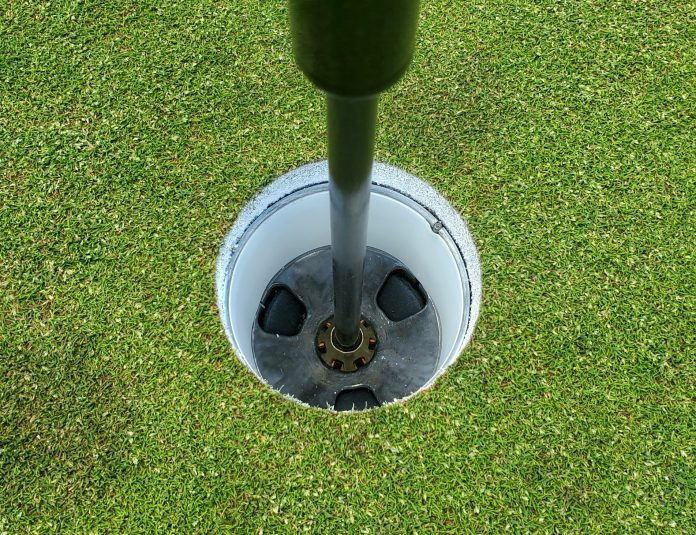
Golf Hole Microphones captured a variety of audio, from golfer/caddy talks to nat sounds on the course.
He adds that the Golf Hole Microphones have withstood water challenges. Besides regular dousing during golf-course irrigation, the holes were submerged during rains at the 2019 U.S. Open.
There were barely any bumps on the path to the new league’s initial audio signature. One minor one: half the flagpoles that LIV Golf provided didn’t fit into the standard-size hole in the Golf Hole Microphone. Fortunately, the course had other flagpoles on hand that did fit.
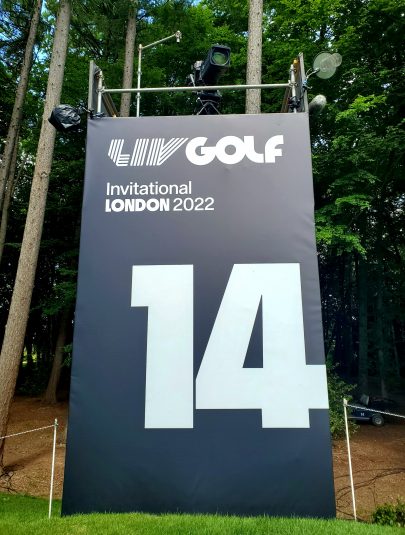
For the first LIV Golf tournament, on-course audio included pop music pumped through a sizable PA system.
“Frequency management was no problem at all there,” notes Kasey Gchachu, RF and audio technician and audio mixer onsite for the event for PWS. “We had no issues with any of the transmitters or the receivers in the towers around the course. Our proprietary transmit antenna system in the cup paired with Q5X customized transmitters provided clean audio from the cups throughout the tournament.”
The Golf Hole Microphones were able to gather a wealth of golf sound, from tactical discussions between golfers and caddies to the kinds of nat sounds rarely heard on golf shows, such as the footfalls of golfers approaching the cup on the green and the ball hitting the bottom of the cup.
“We’re able to get sound that the traditional microphones, like shotguns and parabs, just can’t reach,” says Gchachu. “It’s clear that this is where LIV Golf wants to take golf audio. Sound is going to be a big part of it going forward. We want to expand on it further, using the Q5X technology and PWS’s expertise.”
